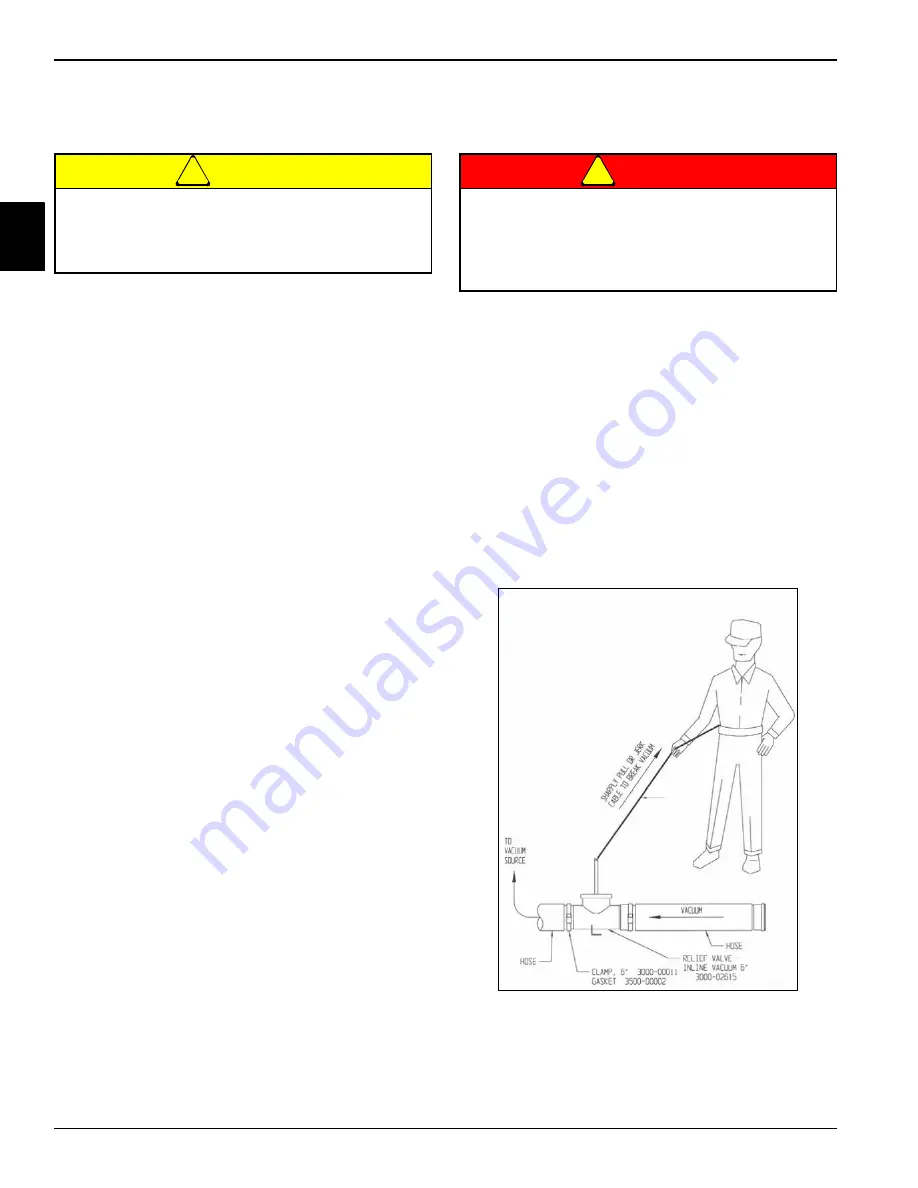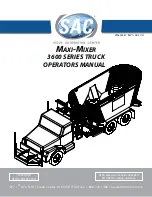
1-18
Publication: 0028607
SAFETY
1
VACUUM EQUIPMENT OPERATION SAFETY AND HAZARD
WARNINGS — CONTINUED
CAUTION
Pre-Start Checklist
• Ensure operator and co-workers have read and
understood the safety instructions in the Operator’s
Manual.
• Ensure that all required maintenance has been
performed.
• Park truck on level ground and set parking brakes.
• Ensure cleanout doors and tailgate are closed and
latched shut.
• Attach suction hose and tubing as required, including
relief valve.
Vacuum Operation
NOTE
See “VACUUM RELIEF VALVE SAFETY” on
pages 1-19–1-22.
• The unit must be thoroughly cleaned between jobs to
prevent cross-contamination or chemical reactions.
• Never use the vacuum in any type of rescue
operation.
• Operating the unit inside a building or confined areas
can create additional risks to the unit, operators, and
building occupants. Engine exhaust gas can reach
deadly levels. Heat buildup from the engine and
blower discharge can overheat equipment.
• Never use an air mover machine for vacuuming
hydrocarbon or flammable materials unless the flash
point of the material is 150°F or higher. Pressurized
or pump off loading is not permitted unless the flash
point of the material is 150°F or higher, unless
nitrogen is present.
DANGER
• The use of this equipment in the removal or handling
of any regulated substance or material must be
performed in strict accordance with all applicable
federal, state, and local laws and regulations.
Approved safety and personal protection equipment
and clothing must be used and worn at all times.
• Never use a vacuum machine to vacuum dusty
materials until the material safety data sheets
(MSDS) have been consulted to determine if the dust
is combustible. Only air mover units that are part of a
verified assured grounding system and that have
bags, doors, and any other non-welded debris body
components grounded to the debris body can be
used if the materials contain combustible dusts.
Figure 1-18
Failure to engage parking brakes and/or position
wheel chocks could result in unexpected chassis
movement, which could cause bodily injury or
property damage.
Never operate engines where there are or can be
combustible vapors. Vapors pulled into an engine
air intake can cause engine acceleration and over
speeding. This can result in death, injury, and
property damage.
Summary of Contents for Camel 1200 (Dump Body)
Page 1: ......
Page 2: ......
Page 4: ......
Page 62: ...1 52 Publication 0028607 SAFETY 1...
Page 64: ...2 2 Publication 0028607 PRE OPERATION 2 Figure 2 1 Figure 2 2 1 3 2 5 6 4 7...
Page 106: ...4 18 Publication 0028607 SEWER CLEANING TYPICAL SEQUENCE 4...
Page 118: ...5 12 Publication 0028607 WATER RECYCLING SYSTEM 5...
Page 132: ...6 14 Publication 0028607 LUBRICATION AND MAINTENANCE 6...
Page 156: ...i vi Publication 0028607 IX...
Page 157: ......







































